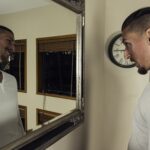As a novice group counselor at a social services agency, I earnestly explained curriculum materials from what became a discredited list for what was then termed “substance abuse.” A weary client, court-mandated to treatment, listened respectfully, head tilted towards his hands folded on the table. He would be returned to jail if he used substances again. When I finished talking, he paused, then looked up at me. With earnestness matching my own, he asked, “How do you abstain?”
If he could abstain, he would be free.
I was stunned and chilled by the chasms this realization revealed. Counselors are advised to “meet clients where they are.” I remain ashamed I was miles away from meeting his true needs. And I didn’t know the answer to his question. That was five years ago. I have devoted myself to answering it since.

In an ideal world, the health condition of addiction/substance use disorder would be managed by health care professionals, not the court system. Rather than ordering up the distress and danger of abstinence, the treatment plan might taper down substance use while tapering in supportive replacements. The criminalization and stigmatization of substance use force health care professionals to try to help the people in their care maintain abstinence to prevent loss: of employment, of custody of their children, of university enrollment, financial aid or scholarships, and of freedom through incarceration for displaying symptoms of an illness. (What an ethical double bind! The primary symptom of addiction is return to use. If clients could abstain, they would be in remission and wouldn’t meet the criteria for the very disorder for which they are in treatment with us.)
For those attempting or mandated to achieve and maintain abstinence from problematic substances, estimates of rates of return to use in year one range from 60% to 80%.
What works to help people overcome the odds of returning to use?
Self-help is not an evidence-based treatment for substance use disorder. Yet, each week holds 168 hours. While people with substance use challenges who follow evidence-based treatment plans may benefit from medications and several hours of medical and voluntary counseling appointments per week, the rest of the time people are on their own.
How do you abstain? During the times when people must help themselves, research offers clear guidance.
With Sanjay Kishore, M.D. and the contributions of countless other individuals with substance use challenges, I have co-authored Help That Helps: A Kind, Research-Informed, Field-Tested Guide for People with Substance Use Concerns. A .pdf of 107 pages, Help that Helps is a self-guided program – tested and refined by real people with real substance use issues – for people with substance use challenges who need or want to abstain. Again, the caveat: Any self-help guide is to be used in tandem with medical care. (For those who are allowed to practice harm reduction, this workbook may be helpful.)
My theory is that interspersing an hour per day of remission-focused work with research-informed materials during each of the 7 days of those 168 hours per week can increase the chances of remaining abstinent. Help That Helps offers those materials. To push past one-year return to use stats, I’ve devised a year-and-a-day notebook project to assist. For 52 + 1 = 53 weeks, individuals are invited to do engaging exercises with reference to Help That Helps. I add new ideas and materials on the For Clients page. On the For Clients page, I also offer suggestions for further reading.
My client was returned to jail for return to use soon after he asked, “How do you abstain?” I regret beyond words my inability to answer at the time.
Today, I know that, after medical care, the research suggests that self-care is the primary method people can use to help themselves abstain. A self-care checklist is on pages 28-29 in Help That Helps. An example of a day spent practicing self-care is here. Second, they can begin to identify the needs and wants met by substances and ponder alternatives. Assistance with that process is on pages 13-27 in Help That Helps.
I have been in remission from alcohol use disorder since the end of 2012. I had the luck of choosing to attempt abstinence from the substance that had become problematic for me rather than being mandated to it. Regardless, the first years were spent in anguish, easing up only once I was able to follow the guidance of research, primarily through reading Maia Szalavitz’s Unbroken Brain: A Revolutionary New Way of Understanding Addiction and Facing Addiction in America: The Surgeon General’s Report on Alcohol, Drugs, and Health, both published in 2016.
As a person in remission who is also a counselor, I see my work as three-fold. One, I protest the war on people who use drugs. Two, I advocate for addiction policy reform to allow free access to evidence-based treatment. Three, I get evidence-based treatment to the people who have what I have.
I am only person and can only do so much. But in my sections of Help That Helps, I tried to write words that would have reassured, informed, and guided me. I hope they offer comfort and guidance – even freedom – to people who have what I have.
If I can be of any service in any way, please do not hesitate to contact me.
Image: iStock
Last updated 9/14/19
Anne Giles, M.A., M.S., L.P.C., is a counselor in private practice in Blacksburg, Virginia.
This content is for informational purposes only and is not a substitute for medical or professional advice. Consult a qualified health care professional for personalized medical and professional advice.
